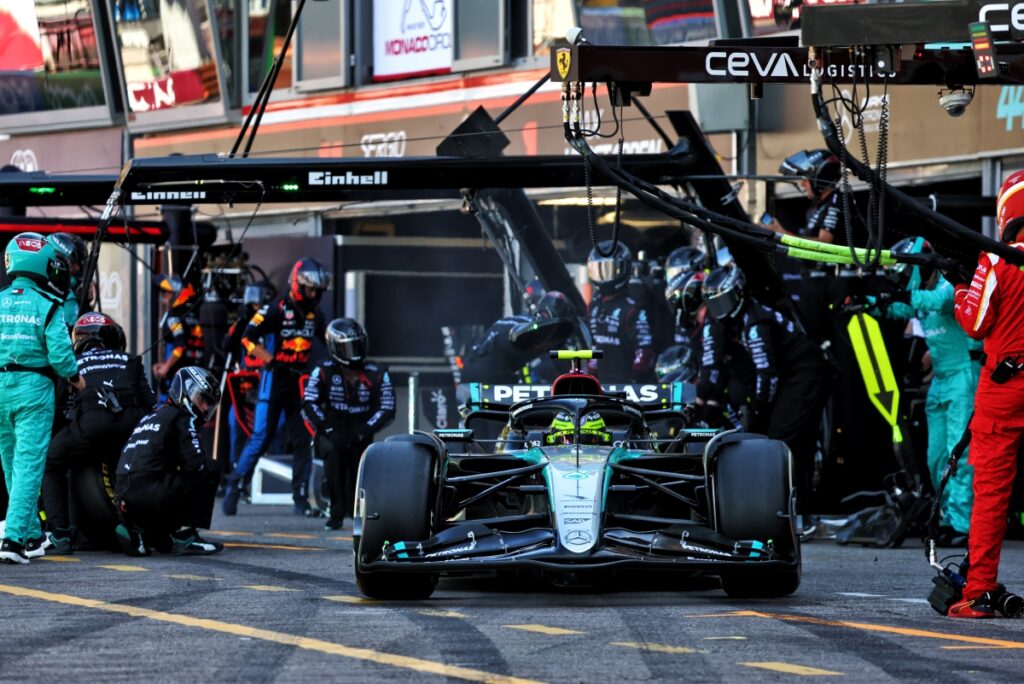Mercedes' Costly Radio Misstep: The Untold Story Behind Hamilton’s Failed Monaco F1 Strategy

In the electrifying world of Formula 1, where split-second decisions can make or break a race, even the most seasoned teams can falter. Mercedes recently found itself at the center of such a blunder during the high-stakes Monaco Grand Prix, leaving fans and analysts alike scrutinizing the mishap that ultimately cost Lewis Hamilton a crucial advantage.
A First-Lap Red Flag Disaster
The drama unfolded right from the start, as a first-lap red flag sent shockwaves through the strategies of both Mercedes and Red Bull. Drivers including Hamilton and Verstappen were compelled to manage their Medium tyres carefully, as their plans went awry. With the track positions constantly in flux, there was a small window of opportunity for making strategic pit stops.
A Pit Stop to Remember
As the race progressed, it appeared that Hamilton had a sufficient gap behind him to pit without losing his position. Seizing this moment, Mercedes summoned the seven-time champion into the pits on Lap 51 to switch to Hard compound tyres. However, this seemingly routine pit stop was marred by a critical oversight. Hamilton was not given the ‘out-lap critical’ message, a key communication that would have alerted him to push his new tyres to their limit immediately after his pit stop.
The lack of this message proved costly. When Verstappen pitted on the next lap, he successfully covered the undercut and emerged ahead of Hamilton. This prompted Hamilton to question the decision-making process on the team radio, igniting further tension and confusion.
The Explanation from the Pit Wall
Toto Wolff, Mercedes' Team Principal, did not shy away from addressing the issue head-on. “That was a miscommunication first between us on the pit wall that we got that wrong,” Wolff admitted candidly. “It should have been an ‘out-lap critical’, trying to undercut. But then there was a debate whether any out-lap would be enough from the new tyre.” In a world of high-octane racing, even a moment's hesitation or doubt can lead to missteps, as was the case here.
However, the decision-making process wasn’t as clear-cut as it seems. Wolff explained the conundrum behind the failed communication: “The worry in the background was that if we thrashed that tyre in a single lap, then what would happen later. But in summary wrong message to Lewis, this was the team’s fault.”

Monaco’s Inescapable Challenges
Beyond the team's error, the inherent challenges of Monte Carlo's circuit played a significant role in the race outcome. Known for its narrow, twisting streets, overtaking in Monaco is notoriously difficult. Wolff acknowledged this reality, suggesting that after the early crash, the team’s opportunities were severely limited.
“There was one strategic play that could have helped us and this is beyond the Safety Car at the right time. But it could have been that both cars could have worked together and created the necessary gap for a stop. Now, obviously that’s fair for one and unfair for the other one, but I think that could have been a play variant,” Wolff explained.
The Lesson for the Future
Despite meticulous planning, sometimes factors outside control, including red flags and inherent circuit limitations, dictate the race outcome. Wolff summed it up aptly, “The moment the crash happened, it was clear that we were really on the back foot. Fundamentally, I don’t think there is a lot you can change in Monaco. You pretty much end where you start.”
This incident underscores the high-risk, high-reward nature of Formula 1 racing. It’s a poignant reminder that even the best teams must continuously optimize their strategies and communications to minimize errors.
As the championship battle heats up, Mercedes will undoubtedly take this hard-earned lesson to refine their approach, aiming to empower Hamilton to secure every possible advantage in the races to come.